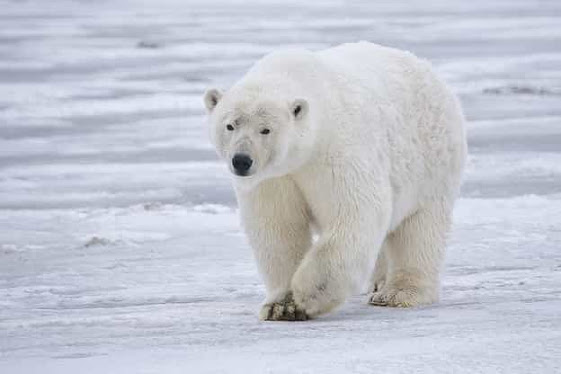Where do Polar Bears Live

Polar bear is the largest extant bear species and
predatory carnivore. Their homes are within the Arctic Circle, as far south
Newfoundland, which is a large island off the east coast of the North American
mainland. They live in surrounding seas and landmasses of Arctic Ocean. Most polar bears are born on surrounding ice-land of
the seas but spend most of their time on the sea-ice, because they hunt the
seals which are their favourite food, from the edge of sea-ice.
They depend on the sea-ice for getting food so the polar bears are classified as marine mammals. Their habitat is sea-ice and the Arctic Inter-Island archipelagos. These areas are called “Arctic ring of Life” which is one of the largest polar bear habitats in North America. Currently 20 polar bear populations live in Alaska, Canada, Denmark (Greenland), Norway and Russia.
The distribution of polar bear depends on their food
availability and sea-ice conditions. Polar bears depend on the sea-ice and use
it for several activities like hunting seals, seeking mates and breeding,
moving long distance, reaching the terrestrial obstetric areas.

Polar bears
prefer the areas where the sea-ice meets water. Polynya is an area of open
water surrounded by sea-ice and is very important for polar bears. Polar bears are
able to swim up to 65 kilometres in the open waters of a Polynya.
Each year polar
bears migrate to Churchill, Manitoba. In mid to late summer, when the sea-ice
begins to melt in Hudson Bay, James Bay and the surrounding areas, polar bears
are forced onshore and wait there for two to five months until the next
freeze-up. On the shore, they do not get sufficient food due to lack of
available prey so they rely on their fat reserves.
In late autumn, pregnant female polar bears dug in the
land near the coast in snowdrifts, in farther south, in frozen earth or peat to
make their dens. Between the Chukchi and Beaufort seas, polar bears retreat
further north into the ice each summer because these areas remain frozen
year-around. Polar bears are also found in coastal areas, and also found in the
channels between the ice lands and archipelagos of the Arctic.
A new study of polar bear DNA shows that 19 recognized
subspecies of polar bear are divided into four clusters that are genetically identical.
They are Western and Eastern polar basins, Southern Canada and the archipelagos
of islands and peninsula between Canada and Greenland. DNA evidence suggested
that the main gene flow was towards the southern part of Canada and the east pole Basin towards
the islands.
Due to the global warming, the earth’s temperature is
rising, resulting in massive ice melt on land and at seas. Due to lack of
sea-ice, which is polar bear’s hunting and mating areas, their population are
declined. Last 24 years polar bear’s population decreases from about 1200 to
800 in the western Hudson Bay areas of Canada, because sea-ice break up early
and freezes later in a shortened season. Arctic warming is one of the main
reasons of the migration of polar bears.


.jpg)














0 Comentarios:
Post a Comment
Please do not use any abusing words or enter any spam links in the comment box